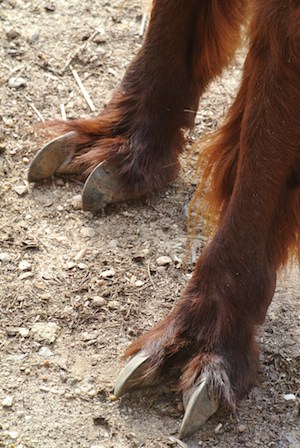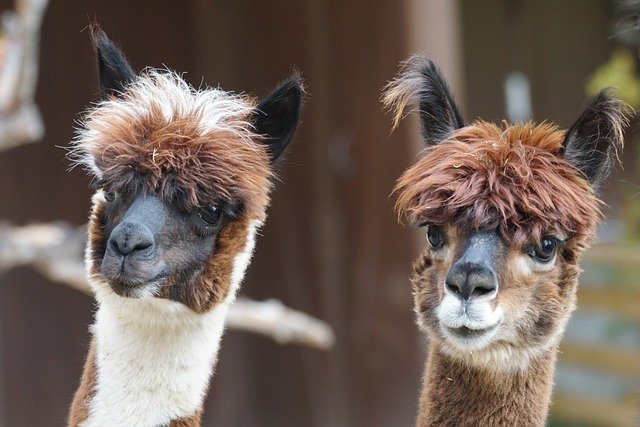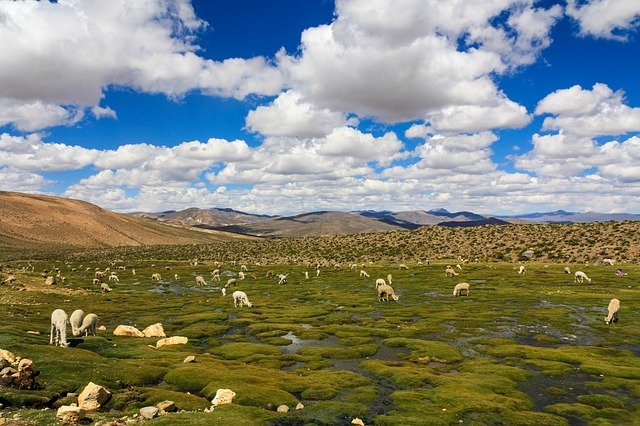PERU
A Fleece-y Species
By Charlotte McGlone
Chapel Hill, NC, United States
When it comes to warm, soft, and fuzzy, there’s nothing like an alpaca. This animal’s coat is made of silky, luxurious fibers that are warmer than wool, softer than cashmere, and hypoallergenic.
Alpaca are native to the altiplano (“high plain”) region of the Andes. This area includes parts of four countries (Peru, Bolivia, Chile, and Argentina) at an average elevation of 12,300 feet. The climate is cool year-round, with the ground remaining frosted for over six months at a time, so this species has developed thick, velvety fleece to retain warmth.
Alpaca in Peru
Estimates are that 3.6 million of these animals reside within Peru’s borders, comprising 80 percent of the world’s population. There are thought to be at least 50,000 families in the altiplano that raise alpaca for income.
These creatures eat less food than others of their size, and the sparse native grasses of the high plain provide all the nutrition they need. In fact, they need to eat only two percent of their body weight to remain healthy, because of their highly efficient digestion.
 Alpaca stomachs have three compartments that extract all possible nutrients from their forage. Also, they have developed adaptations to preserve their food supply, such as two-toed, padded feet to tread gently on the vegetation and consuming only exposed leaves so that the roots can regrow.
Alpaca stomachs have three compartments that extract all possible nutrients from their forage. Also, they have developed adaptations to preserve their food supply, such as two-toed, padded feet to tread gently on the vegetation and consuming only exposed leaves so that the roots can regrow.
Fabulous Fleece
The most valuable part of this species is its fleece, with annual exports of US$175 million for Peru. Found in 52 naturally occurring colors, it is used to make everything from gloves to sweaters to blankets. The fleece sells for US$3 to US$5 per ounce, depending on its quality. Peru’s textile and garment industry as a whole generates US$2.1 billion for its economy.
The government of Peru has founded a new venture that seeks to promote this fiber in the high fashion industry. In November of 2013, five designers traveled almost 4,000 miles from New York City to Peru to learn about the possibilities of using this luxurious woven material. Their six-day trip included meeting indigenous herders, watching the fleece being spun into yarn, and observing how the resulting fabric can be transformed into garments.
Not only is alpaca fiber incredibly soft and warm, it is also durable. It grows a natural resin, which protects it from staining or wrinkling. Ancient woven cloths of alpaca have been found in archeological sites in Peru, dating back 2,500 years. Buying a sweater that lasts for that long means you’d better pick a style that won’t go out of fashion!
Have a suggestion for this story? We’d love for you to submit it!


Blank
Blank
Math Resources
- If you were going to start raising alpaca to sell their fleece, what would be your initial budget for this business endeavor? What would be your ongoing overhead costs? What would you need to produce in order to be profitable?
- Devise a schedule for an Alpaca Project, Part 2. Who would you want to invite and how would you want them to spend their time?
- Research how much an alpaca typically weighs at different stages of its life and graph how much food it needs to consume at each point.
Extension Question
In 1991, the government of Peru lifted its ban on the export of live alpaca to other countries. What do you see as the pros and cons of a ban like this one?
Explore Further
- Website of the US-based Alpaca Owners Association
- Facts about alpaca and related breeds
- Information about alpaca in Peru
- Video of a herd of alpaca
Share Your Story
Write your own Global Math Story and send it to us!
Sorry, the comment form is closed at this time.